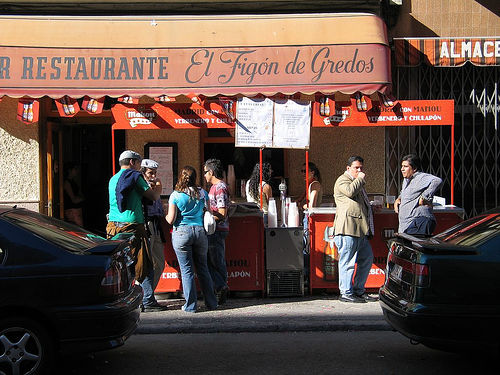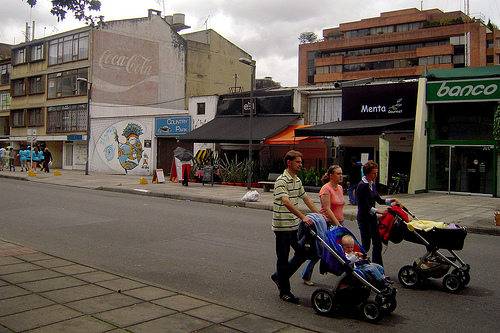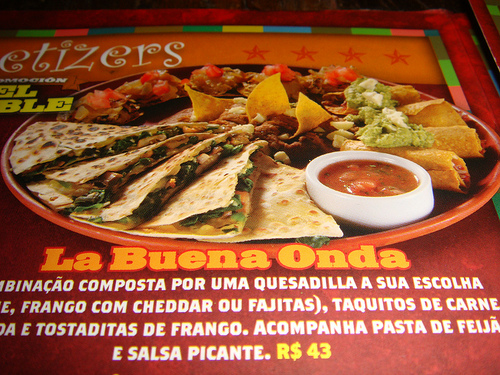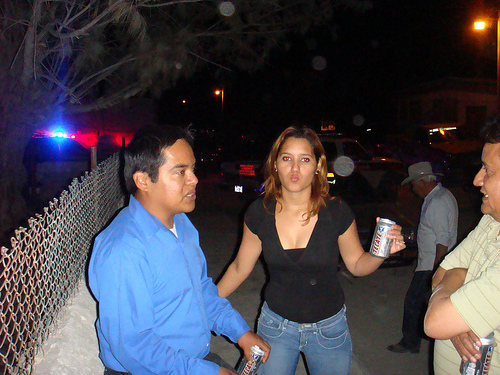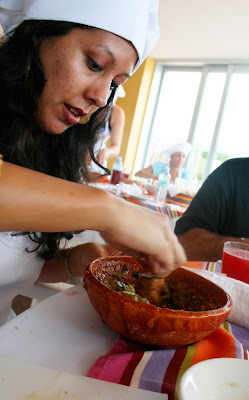Be it Spanish or any other language, the most painful aspect invariably turns out to be the appropriate usage of its prepositions. To us English speakers Spanish prepositions might seem way too unruly and chaotic but that’s how the Spanish speakers feel about English too. Try explaining to them, for instance, why you live “in” the house but are “at” home! Grammar rules, more often than not, defy all logic. Fortunately, when it comes to the Spanish por and para, there still exists enough logic to save your day. Mastering this logic is key to proficiency in Spanish as these prepositions are just too damn indispensable.
One thing that’s obvious is that prepositions, more so than any other figure of speech, can never be translated word-for-word. For example, memorizing that a means “to” and por means “for” is only going to prove disastrous for your Spanish skills. The key to using the right preposition in Spanish is knowing which one conveys what you mean the best. Hence, the first step would be to rid yourself of the idea than por and para are two different translations the English “for” only to make non-natives’ lives miserable!
It’s true that the two prepositions are more related to “for” than to any other English preposition, but it runs deeper than that. Being related is one thing and carrying the same sense is another. For example, consider the following two sentences:
This book is for you
I’m looking for a book
Though both of them use the word “for” but do they carry the same meaning? Just because English uses the same word for the two drastically unrelated scenarios, doesn’t mean Spanish and other languages must too. This realization is extremely important. Don’t learn what the word translates into in English. Learn, instead, what sense it conveys. Translate the sense, not the word.
The trick is to see every “for” scenario as a “cause vs. effect” one. A means vs. an end, if you will. Por goes with the cause and para, the effect. Imagine drawing a line in space and time. Por would lie someplace at the beginning or along that line while the very end of the line is where you’ll find para. Still confused? Let’s illustrate this.
Imagine you and Freddie work in the same office and have the same boss, Rodrigo. One day, Freddie is sick and you are asked to fill in for him on his project. Now who are you working for? Freddie? Or, Rodrigo? You are working on that project “because” Freddie didn’t show up. Obviously, he’s the reason you’re on this project in the first place.
Trabajo por Freddie (I work for/in behalf of/because of Freddie)
On the other hand, Rodrigo is your employer. In this context, your working for him is actually the effect or the result of him employing you. He is the recipient of your work. He sits at the far end of our imaginary line. Hence this scenario calls for a para:
Trabajo para Rodrigo (I work for Rodrigo)
To sum up, para is used whenever “for” means “in order to” because it invariably follows a goal, an effect. And that’s also the reason why por is used whenever “for” carries a sense of “by,” “in behalf of,” “for the sake of,” or “because of.” Let these examples illustrate this:
Jugo para ganar (I play for winning or I play in order to win).
Hice para ella (I did it for her).
Notice the para in the last sentence. What’s implied here is that she is the recipient of my action and it’s only me who was supposed to do it (maybe she’s my boss). However, if I did it “because of” her (say, to please her or because she didn’t do it), i.e., I wasn’t meant to do it but I did it anyway, the Spanish would take por:
Hice por ella
Check out the following scenario in the same vein:
Compro el regalo para ella (I am buying the gift for her).
Here, the gift is “meant for” her. She’s the intended recipient and the goal of this action. However, if I were buying it “in her behalf,” the preposition of choice becomes por.
Let’s extend our imaginary-line theory to scenarios involving physical movements and see if it holds water. If we draw a line tracing any such motion, our theory says that para will only hint at what lies at the far end of the line (the destination) and por, at whatever lies either at the start of the line or someplace along it (the origin or the way).
Salimos para Ibiza (We’re leaving for Ibiza)
Here, Ibiza is at the far end of our line. So it takes para.
Now, consider this sentence:
Vamos por Ibiza (We’re going through Ibiza).
Here, Ibiza is no longer our destination. Instead, it falls someplace along the line. We will travel right through it and continue on our journey. So this time, por wins.
For the same reason, por also wins if you were going toward Ibiza but it were not our final destination. But, if you were going in that direction with the intention of reaching Ibiza, para goes. See these sentences:
Ven por aquí (Come this way).
Ven para aquí (Come here).
What if we draw our imaginary line in time? Will it hold? Let’s see. Our theory says that por will stay along the line or at the start but never the end. The end is for para.
Caminé por tres horas (I walked for 3 hours).
In this case, the line spans the entire course of action, starting when I start walking and ending when I stop. So, the “for” seems to span the length of that line, sticking “along” it and not at the end of it. That sounds like por!
Now, observe this scenario:
La tarea para lunes es leer el capítulo (The homework for Monday is to read the chapter).
Here, Monday is the destination in time. The homework has to be done by Monday. That’s where the line ends. You can observe many other examples to understand this better:
Estará aquí para marzo (She’ll be here by March).
Salen para octubre (They’re leaving by October).
The trick is slightly different but ridiculously simple. Just remember how the English “per” sounds just like por. Of course, that will help you remember that “per” directly turns into por when translated into Spanish:
Mi carro rinde veinte millas por galón (My car goes twenty miles per gallon).
This trick can also be extended to cover all scenarios involving any kind of exchange. If por is good for “miles per gallon,” it might as well be good for “kilometers per hour” or “dollars per pound.” It can also cover a situation such as this:
Pagó cinco dólares por el libro (She paid five dollars for the book).
Why? Two reasons actually. First, there’s a clear exchange involved here: Dollars for books, not too different from “miles for gallon” or “dollars per pound.” Another reason is our cause-and-effect theory. The dollars are being paid “for the sake of” the book. The book is the reason for this transaction, and reasons are defined by por, remember? Even the car runs 20 miles only “because” there is a gallon of gas in it!
So, you see life’s much simpler than it seemed. Just remember the cause-and-effect principle and imagine actions around the imaginary line we talked about and you should be comfortable with pretty much any por-para situation. This is, of course, not all there is to por and para and there are many, many scenarios that involve them. But these broad categories should cover most of the common ones and help you get a head start in understanding the prepositions without cramming up any grammar rules. Feel free to share with us if you have any other por-para trick that helped you nail these devils.
It’s all about the sense
One thing that’s obvious is that prepositions, more so than any other figure of speech, can never be translated word-for-word. For example, memorizing that a means “to” and por means “for” is only going to prove disastrous for your Spanish skills. The key to using the right preposition in Spanish is knowing which one conveys what you mean the best. Hence, the first step would be to rid yourself of the idea than por and para are two different translations the English “for” only to make non-natives’ lives miserable!
It’s true that the two prepositions are more related to “for” than to any other English preposition, but it runs deeper than that. Being related is one thing and carrying the same sense is another. For example, consider the following two sentences:
This book is for you
I’m looking for a book
Though both of them use the word “for” but do they carry the same meaning? Just because English uses the same word for the two drastically unrelated scenarios, doesn’t mean Spanish and other languages must too. This realization is extremely important. Don’t learn what the word translates into in English. Learn, instead, what sense it conveys. Translate the sense, not the word.
Cause and effect
 |
| Working “for” (para) him or “in behalf of” (por) him? It’s all about perspective! Photo credit: Bark licensed CC BY 2.0 |
Imagine you and Freddie work in the same office and have the same boss, Rodrigo. One day, Freddie is sick and you are asked to fill in for him on his project. Now who are you working for? Freddie? Or, Rodrigo? You are working on that project “because” Freddie didn’t show up. Obviously, he’s the reason you’re on this project in the first place.
Trabajo por Freddie (I work for/in behalf of/because of Freddie)
On the other hand, Rodrigo is your employer. In this context, your working for him is actually the effect or the result of him employing you. He is the recipient of your work. He sits at the far end of our imaginary line. Hence this scenario calls for a para:
Trabajo para Rodrigo (I work for Rodrigo)
To sum up, para is used whenever “for” means “in order to” because it invariably follows a goal, an effect. And that’s also the reason why por is used whenever “for” carries a sense of “by,” “in behalf of,” “for the sake of,” or “because of.” Let these examples illustrate this:
Jugo para ganar (I play for winning or I play in order to win).
Hice para ella (I did it for her).
Notice the para in the last sentence. What’s implied here is that she is the recipient of my action and it’s only me who was supposed to do it (maybe she’s my boss). However, if I did it “because of” her (say, to please her or because she didn’t do it), i.e., I wasn’t meant to do it but I did it anyway, the Spanish would take por:
Hice por ella
Check out the following scenario in the same vein:
Compro el regalo para ella (I am buying the gift for her).
Here, the gift is “meant for” her. She’s the intended recipient and the goal of this action. However, if I were buying it “in her behalf,” the preposition of choice becomes por.
Motion and destination
 |
| Salimos para Ibiza Photo credit: David Sim licensed CC BY 2.0 |
Salimos para Ibiza (We’re leaving for Ibiza)
Here, Ibiza is at the far end of our line. So it takes para.
Now, consider this sentence:
Vamos por Ibiza (We’re going through Ibiza).
Here, Ibiza is no longer our destination. Instead, it falls someplace along the line. We will travel right through it and continue on our journey. So this time, por wins.
 |
| Vamos por Ibiza Photo credit: Chapuisat licensed CC BY 2.0 |
Ven por aquí (Come this way).
Ven para aquí (Come here).
The line in time
What if we draw our imaginary line in time? Will it hold? Let’s see. Our theory says that por will stay along the line or at the start but never the end. The end is for para.
Caminé por tres horas (I walked for 3 hours).
In this case, the line spans the entire course of action, starting when I start walking and ending when I stop. So, the “for” seems to span the length of that line, sticking “along” it and not at the end of it. That sounds like por!
Now, observe this scenario:
La tarea para lunes es leer el capítulo (The homework for Monday is to read the chapter).
Here, Monday is the destination in time. The homework has to be done by Monday. That’s where the line ends. You can observe many other examples to understand this better:
Estará aquí para marzo (She’ll be here by March).
Salen para octubre (They’re leaving by October).
Exchange or substitution
The trick is slightly different but ridiculously simple. Just remember how the English “per” sounds just like por. Of course, that will help you remember that “per” directly turns into por when translated into Spanish:
Mi carro rinde veinte millas por galón (My car goes twenty miles per gallon).
This trick can also be extended to cover all scenarios involving any kind of exchange. If por is good for “miles per gallon,” it might as well be good for “kilometers per hour” or “dollars per pound.” It can also cover a situation such as this:
Pagó cinco dólares por el libro (She paid five dollars for the book).
Why? Two reasons actually. First, there’s a clear exchange involved here: Dollars for books, not too different from “miles for gallon” or “dollars per pound.” Another reason is our cause-and-effect theory. The dollars are being paid “for the sake of” the book. The book is the reason for this transaction, and reasons are defined by por, remember? Even the car runs 20 miles only “because” there is a gallon of gas in it!
So, you see life’s much simpler than it seemed. Just remember the cause-and-effect principle and imagine actions around the imaginary line we talked about and you should be comfortable with pretty much any por-para situation. This is, of course, not all there is to por and para and there are many, many scenarios that involve them. But these broad categories should cover most of the common ones and help you get a head start in understanding the prepositions without cramming up any grammar rules. Feel free to share with us if you have any other por-para trick that helped you nail these devils.


















